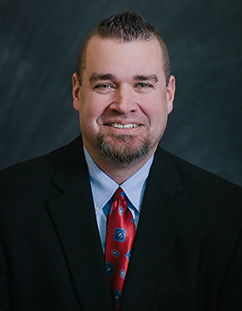SECURE 2.0 Act
The SECURE (Setting Every Community Up for Retirement Enhancement) Act 2.0 was signed into law at the end of 2022 and builds on the reforms included in the SECURE Act of 2019. There is a significant retirement crisis looming in the United States as Americans are generally saving less and living longer. Unfortunately, the problem has been put on the back burner for too long. The intent of this Act is threefold: to expand and increase retirement savings (especially for low-income and part-time employees), to simplify and improve retirement plan rules, and to lessen the cost to employers of setting up a retirement plan. The overall goal – help people prepare for retirement!
There are dozens of new provisions that have been included in this law. While some provisions went into effect in 2023; others will roll out in 2024 through 2027. In our June 2023 Employee Benefit Plan Resources Newsletter, we focused on a benefit for helping employees with student loan debt through an employer match feature. This article will focus on other changes beginning in 2024.
Withdrawals for Certain Emergency Expenses
There is generally a 10% withdrawal penalty for an early distribution from a tax-deferred retirement plan account if an individual is under 59 ½. This provision will provide an exception to the penalty if the distribution is used for an emergency expense, defined as “an unforeseeable or immediate financial need relating to personal or family emergency expenses”. The distribution can be up to $1,000 annually and can be repaid within a three-year period. The caveat, however, is that no additional emergency distributions are allowed during this three-year window until it has been repaid.
Withdrawals Related to Domestic Abuse
A participant in a retirement plan will be allowed to self-certify that they were a victim of domestic abuse and will be allowed to take an early distribution (penalty-free) of up to the lesser of $10,000 (indexed for inflation) or 50% of their account balance. Additionally, the participant would have the option of repaying the withdrawn amount over three years and would be refunded income taxes on the repaid amount.
Dollar Limit Increase for Mandatory Distributions
Under current law, a retirement plan sponsor is allowed to automatically cash out a former employee’s retirement plan account into an IRA, if the balance is between $1,000 and $5,000. This provision will increase the limit from $5,000 to $7,000.
Emergency Savings Accounts (ESA)
To address the issue that many individuals in the U.S. do not have even $1,000 in savings to handle a potential financial emergency, this provision of the Act provides an option for plan sponsors to provide an emergency short-term savings feature to non-highly compensated employees that is linked to their overall retirement plan account. Participants would be allowed to contribute up to a maximum of $2,500 (or a lesser amount as determined by the plan sponsor) in after-tax (Roth) dollars into this account. Employer matching contributions can be made on these contributions, but they will not be part of the emergency savings account. The maximum balance in an ESA at any time is $2,500. Participants are allowed to withdraw funds at least once per month and the first four withdrawals will not be subject to any fees or other charges.
It is important to remember that for any of the above provisions, an amendment to the retirement plan may be needed. Plan sponsors should work with their third-party administrators to determine which features work for their plan.
For any questions about Secure 2.0 please contact your Hawkins Ash representative and look to future newsletter articles for more guidance under the Act.





